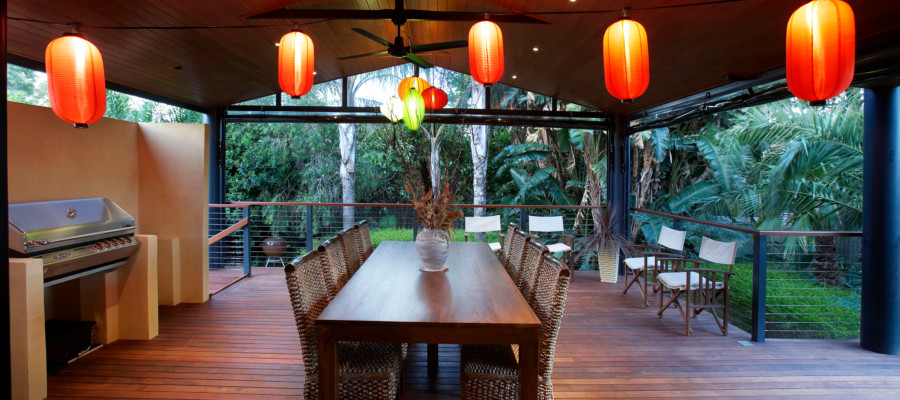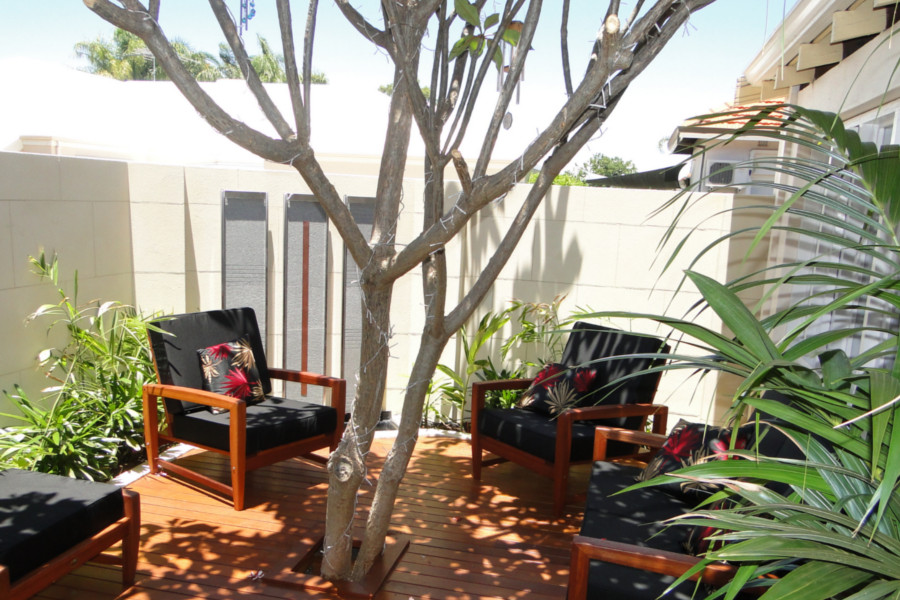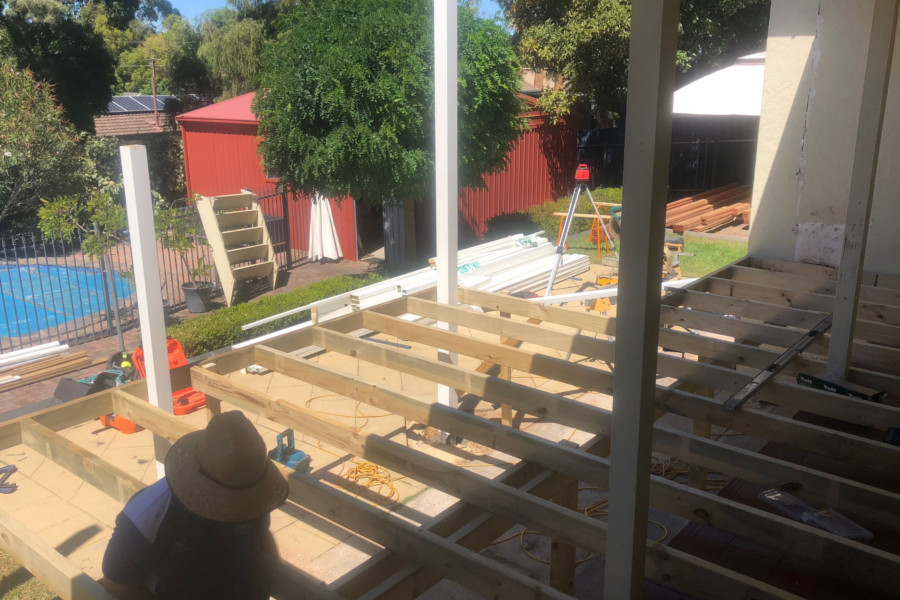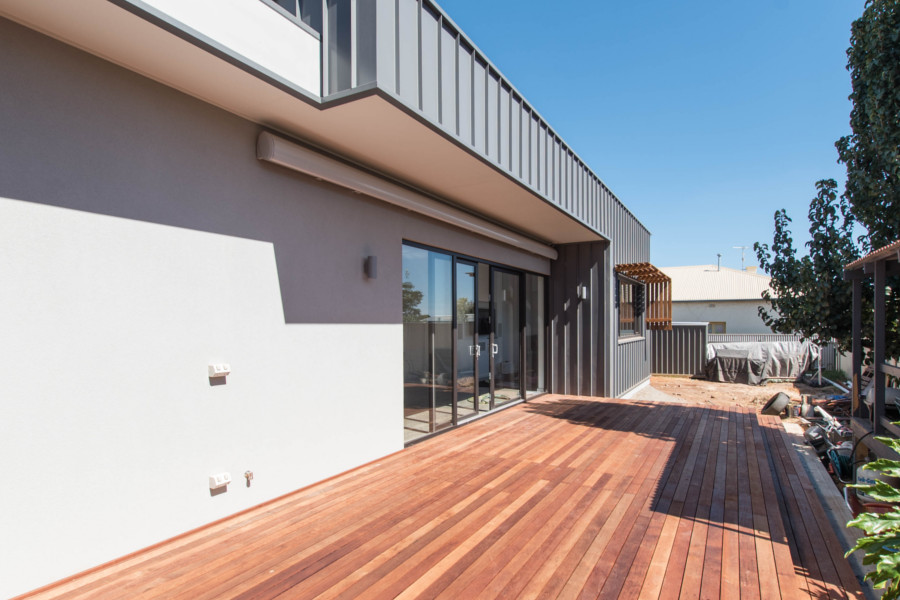
The coming warm summer nights promise endless hours of entertaining family and friends on your patio. Make the experience truly memorable with the right deck or pergola lighting. Lighting design is often an afterthought once the outdoor extension has been completed, or could be altogether overlooked.
Ample lighting provides the necessary illumination, of course, to help you see what you are doing or where you are going. But lighting also sets the mood and contributes to the quality of the experience.
Layers of Light
To the newbie, lighting appears to be nothing more than simply throwing in a lamp here or setting up a chandelier there. But good and proper lighting involves balancing three distinct layers of light sources.
- Ambient Lighting
This is light that provides overall illumination within an area. It usually radiates from an overhead source — such as a mounted fixture or chandelier — and bounces off surrounding reflective surfaces to create an even level of brightness that lets you move about safely. It is essential that the alfresco have a central source of ambient light.
- Task Lighting
This is light that helps you perform specific tasks such as preparing food, dining and reading. As such, task lights are normally positioned beside the areas and surfaces where these activities take place.
- Accent Lighting
While ambient and task lighting layers are often “must-haves,” accent lighting is considered “nice to have.” Accent lights highlight points of interest such as artwork, and create mood and drama.
Types of Bulbs
Armed with the knowledge of what different layers of light should accomplish, let’s take a look at some of the popular types of bulbs available in the market.
- Incandescent bulbs are the light bulbs that come to mind when you say “light bulb,” and those used in illustrations to denote a person with a brilliant idea or a stroke of genius. They produce high levels of light, are relatively inexpensive and sold in almost all stores with a builders’ section. However, they are not very energy efficient and so should be considered as task lights for short-term tasks that require high levels of brightness.
- Fluorescent bulbs require less energy than incandescent bulbs to produce roughly equivalent levels of brightness, and last much, much longer. However, they do contain highly toxic mercury and must be disposed of properly.
- High Intensity Discharge (HID) bulbs are even more energy efficient than fluorescents and are very durable. The light they produce, however, is quite harsh and unpleasant. HIDs are often used to illuminate outdoor areas.
- Light Emitting Diodes (LED) are more efficient and last longer than the other light sources. LEDs are small, though, and a single diode may not provide enough illumination. Hence, a single bulb may require several diodes to produce enough light.
Types of Fixture
You don’t normally plug a light bulb directly into a bare socket on the ceiling or on a wall (although it is possible to do so). Lighting fixtures provide design and aesthetic elements that help enhance the appearance of your deck or pergola. Popular fixture types that can be used to house lights include chandeliers, fans and ceiling designs such as recessed areas.
The Lighting Code
Another critical aspect that often gets overlooked is the building code and local building regulations. The Building Code of Australia (BCA) explicitly limits the amount of energy you can use to light up your home and the corresponding home extensions. In addition, your local Council may impose certain restrictions and requirements.
Make sure you are compliant with these requirements and guidelines. Softwoods have been working with Councils for over three decades now and besides cultivating healthy, respectful relations with Council staff and officials, we have come to know these requirements and regulations by heart.
Lighting Design: Putting It All Together
- Start with ambient lighting. Make sure you have enough light to illuminate entrances, walkways and changes in elevation where people can trip, fall and hurt themselves.
- Identify the important areas where activities will take place. Make plans to provide task lighting in these areas. In some cases you may need to check and make sure that your lighting does not cast any unwanted shadows. For example, if you have a barbecue grill, you may need to install a task light on either side of the grill so that the work area is evenly illuminated.
- Consider what aesthetic features of the patio, deck or pergola you want to highlight, then consider installing accent lights to focus on these features.
- Also realise that not all these lights need to be on at the same time. Think about installing lighting controls, dimmers and perhaps even remote lighting control so that you can switch on lights you are using and switch off those that you do not need. This also gives you the ability to create dramatic lighting effects and ambience.



